PRINCETON, NJ -- Consumers spent $4 more per day, on average, the week of the Fourth of July than they did the prior week -- leaving spending 37% less than the same week a year ago. At the same time, job creation showed no improvement and the percentage of Americans rating current economic conditions as "poor" increased four points to 51%.

Americans saw a slightly weaker economy during the holiday week of June 29 to July 5, with 51% rating the economy "poor" -- up from 47% the prior week and a month ago, but showing little change from the same week a year ago (50%).
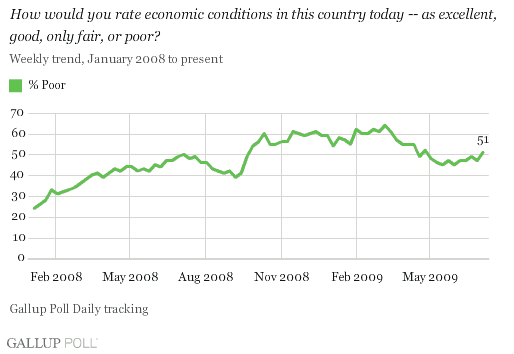
Ten percent of Americans rated the economy "excellent" or "good" last week -- essentially the same as the previous week and a month ago, but down slightly from 13% during the same week a year ago.
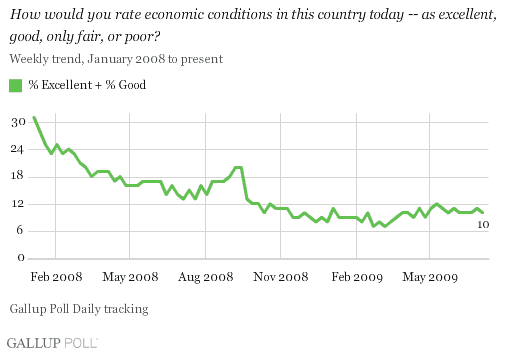
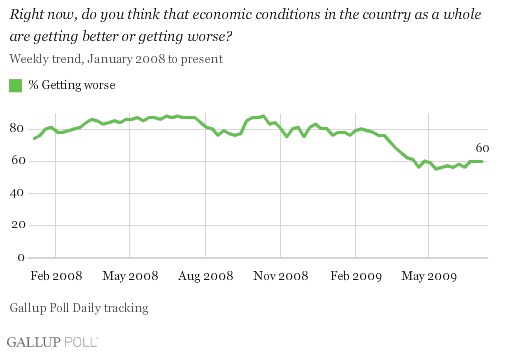
Americans' evaluations of the economy as "getting better," at 35% last week, also saw little change from the previous week and from a month ago. However, the holiday week's percentage is 26 points higher than for the same week a year ago.


Once again, 26% of employees reported their employers are letting people go -- the same as the prior week and essentially the same as the 27% of a month ago. Still, this is nine points worse than the same week a year ago. More importantly, the pattern continues of more employers letting employees go than hiring them (26% versus 23%, respectively). Last year during the holiday week, 37% of employers were creating jobs and 17% letting employees go.
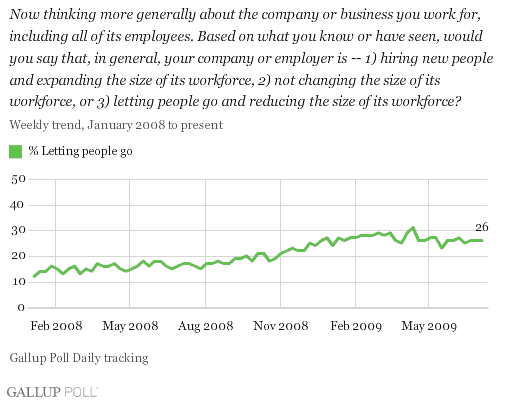
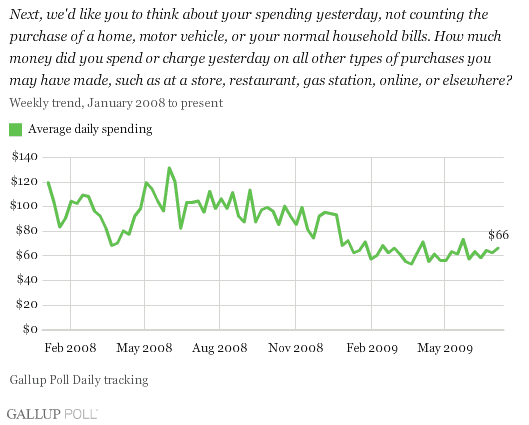
Commentary
The weak job market continues to hang like a cloud over consumer spending. In this regard, Gallup's job-creation and job-loss measures -- like jobless claims -- tend to be more leading indicators of the real economy's direction, rather than trailing indicators such as the unemployment rate. If the job market continues to shed more jobs than are being created, as Gallup's data indicate, it is hard to see how consumer spending can increase significantly or the U.S. economy can get on the path to economic recovery.
Over the first half of 2009, consumer spending levels have been relatively steady, with Americans spending 30% to 40% less than a year ago. The lack of a significant increase in spending over the Fourth of July holiday only reinforces this pattern. It is possible that this is the "new normal" -- at least, until job-market conditions improve. If so, it also remains unclear whether U.S. businesses have fully adjusted to these new spending levels in terms of inventories and jobs.
Unless the economy shows signs of real improvement soon, it seems clear that more questions are likely to arise about the effectiveness of the fiscal stimulus plan passed earlier this year. And there are likely to be more questions about the possibility of another stimulus plan. If indeed that turns out to be the case, the issue may be how public policy can influence the "new normal" instead of the spending and savings patterns of the past.
Survey Methods
For Gallup Poll Daily tracking, Gallup interviews approximately 1,000 national adults, aged 18 and older, each day. The Gallup consumer perceptions of the economy and consumer spending results are based on random half-samples of approximately 500 national adults, aged 18 and older, each day. The Gallup job creation and job loss results are based on a random half sample of approximately 250 current full- and part-time employees each day. For the total samples of these surveys, one can say with 95% confidence that the maximum margin of sampling error is ±3 percentage points.
Interviews are conducted with respondents on land-line telephones (for respondents with a land-line telephone) and cellular phones (for respondents who are cell-phone only).
In addition to sampling error, question wording and practical difficulties in conducting surveys can introduce error or bias into the findings of public opinion polls.

